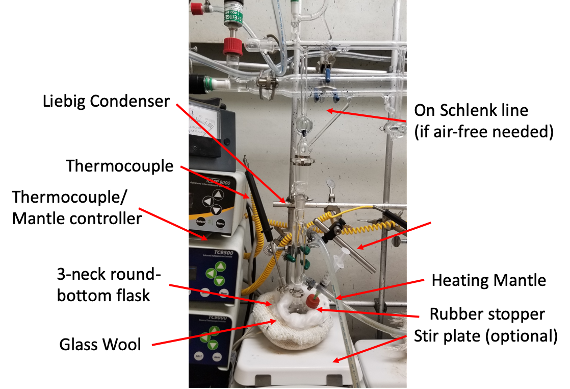


Prepare two stock solutions in a glovebox. Stock solution 1 should have 5mL of acetone in a septa vial. Stock solution 2 should contain 5~10 mM of tetrakis (triphenylphosphine) platinum(0) dissolved in 5mL of acetone. For this stock solution, add about 0.01 g of the platinum(0) compound to 5mL of anhydrous acetone in a septa capped vial. To begin the reaction, inject in 5mL of air-free acetone (kept in a glovebox and completely free from air) to the flask and heat to reflux. The air free acetone can be placed in a septa capped vial and injected with syringe that has been flushed with nitrogen three times from the primary flask to prevent any air from getting in. Dropwise, inject the second solution to the flask over the course of 2~3 hours. After completion, wait an additional thirty minutes. Finally, remove substrates or 2D materials from the solution and rinse with acetone in air.
This one has to be repeated many times to get sizable amounts of platinum intercalated. Also, make sure the lights are on as bright as possible in the hood as it helps for decomposition of the platinum compound.
| Pt(P(C6H5)3)4 | acetone | time | ~ intercalated in Bi2Se3 |
|---|---|---|---|
| 0.01 g | Total = 10 mLs | 2.5 hours | 1 atm % ± 1% |
M. Wang, D. Williams, G. Lahti, S. Teshima, D. Dominguez-Aguilar, K. J. Koski, Chemical intercalation of heavy metal, semimetal, and semiconductor atoms into 2D layered chalcogenides. 2D Materials, 5, 045005 (2018)